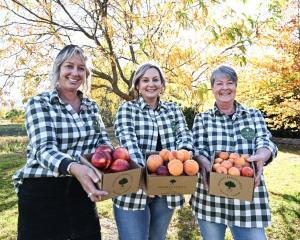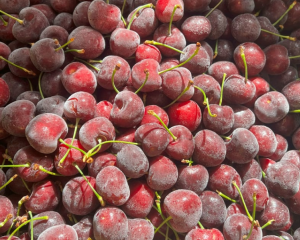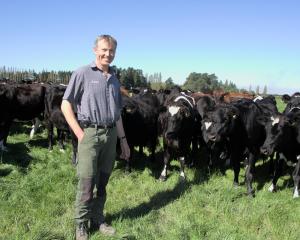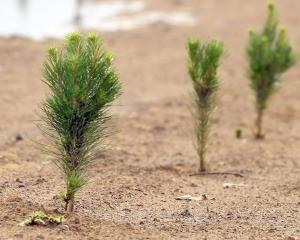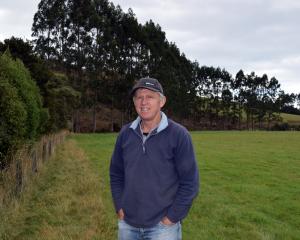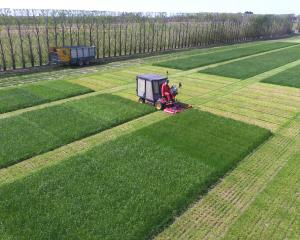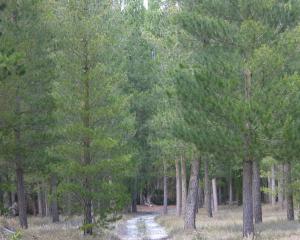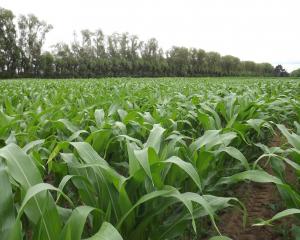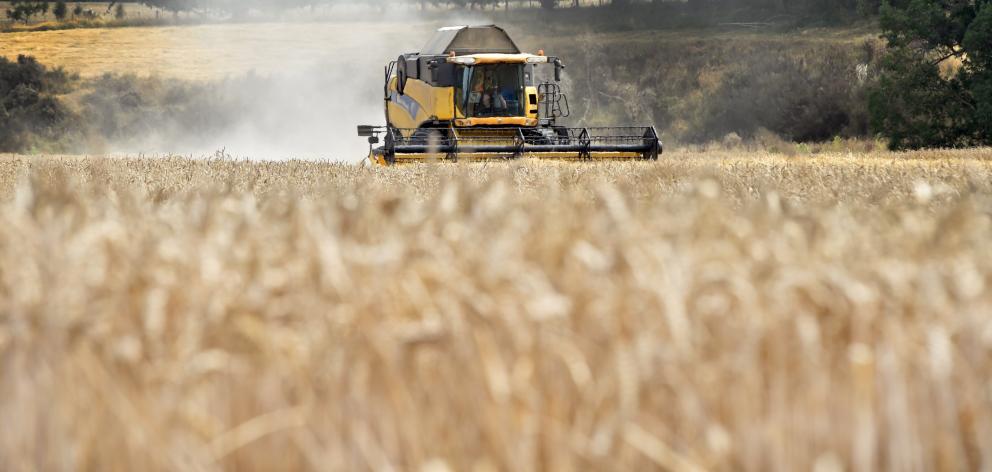
Despite a slow start in December, the following months of high sunshine levels and warm winds lifted yields to above-average levels for most crops.
Federated Farmers Arable chairman David Birkett said the improved yields and quality would do little to offset lower prices.
"We have had a good harvest, but when you have got price drops of 30-odd percent we haven’t had a yield increase of 30-odd percent. So yields might be up by maybe 10% whereas the price drop is more."
He said growers were expecting a correction after grain prices reached a high of $650 a tonne, but not by this much.
Ryegrass contracts were fewer for the coming year and there was a softening of demand — mainly from Europe — for some of the specialty seed crops, he said.
"I think it’s just the global economy and things aren’t that great around the world and I think that’s flowed through to the crops we grow. With our herbage market, China had a big effect and bought a lot of crop and didn’t take it last year. Last year our Nui price was $2.50 a kilogram and this year it’s $1.60/kg due to that. That’s probably the lowest price we’ve seen, I would say, for 15 to 20 years. We are seeing that across a number of crops. Our grains prior to harvest last year were pretty much $650/t for wheat and barley. They are now back to about $450/kg and barley slightly lower. That’s back about 30%."
A global glut, slowing international demand and a supply increase locally were likely behind this drop, he said.
"There are some real concerns, particularly for the maize crop in the North Island. They had the cyclone [Gabrielle] and couldn’t get the crop in the ground when it was so wet. Now there is a large carry over of maize grain and we are really worried there won’t be the contracts to sell it and there’s not the storage in the North Island to store it, so that’s something we are keeping a close eye on."
Maize growing for silage is increasing in the South Island, on a low base compared with the North Island, and is expected to be taken up by local farmers.
"It’s starting to get pretty dry and we are starting to see an increase in demand for supplement feed for the likes of silage and feed grains. So we are seeing that pick up due to the dry and that will help the situation and the fact the dairy price has been ratcheting up means they can make that work and will probably need to feed supplements in the autumn."
Mr Birkett said arable growers were fortunate the dairy industry appeared to be turning for the better as the sheep and beef sector was struggling.
He said this was proving challenging, as when crop contracts were down this could normally be offset by increasing sheep numbers.
"The margins are certainly back on previous years for trading lambs. What next is the question most arable farmers are working through now as they are down on contracts for a lot of the herbage crops and what are the options going into spring and how good will the spring options be for contracts?"
Most farmers had only a little wiggle room with changing crop rotations.
"If you try to chase a market you very rarely catch it, so most farmers have not a set rotation, but they have percentages of different crops and that doesn’t change by much."
Farmers started harvesting before Christmas, with ryegrass seed typically being the first crop and extending through the key summer months to radish seed, which will continue to be harvested into next month.
Mr Birkett said the return to a traditional summer mixed with strong nor’westers and hot days with no wind had been ideal for harvesting.
"I think the best way to describe it is probably above average and there probably hasn’t been any real failures to any degree, so most farmers I’ve talked to are pretty happy with the way the harvest has gone."’
He said the peak of the harvest in January and February was completed during above average sunshine levels, after below average warmth in December, a month critical for grain filling.
"So that would have impacted on yields to a degree and they could have been even better again if we had a better December. But since New Year the weather has been ideal, just nice warm days and not a lot of rain. It feels like the summers of old. The highlight of the year was everything was good. Normally you have one crop that isn’t so good, but this year the yields have been good and there’s been no disappointments.."
Last season, yields were back and the year before wet conditions resulted in poor yields, with growers still recovering from the setback.
Mr Birkett said he was picking wheat yields would be slightly above the national average of about 10t to the hectare.
Most grains, including barley, were above average, but probably only another 0.5t/ha on average, he said.
Milling wheat yields were also up, with farmers expecting higher protein results from the warm, dry weather.
Dryland crops might have suffered towards the end from the dry weather.
The gap between spring-sown and autumn-sown crops could be less this year as spring crops responded to the spring weather. Overall, autumn-sown crops would still carry an advantage.
Specialty seed crops, such as radish and carrot, had produced good yields and among herbage crops, ryegrass had also seen good yields.
Mr Birkett said growers were continuing to work closely with companies signalling several months ago there would be fewer contracts.
He said there would likely be more grain in silos than previous years, so growers hoped demand would increase and wheat mills would use New Zealand wheat.
"There was quite a bit of milling wheat that was planted and one thing that was disappointing was when the prices did drop back they dropped back below what the importer could import product for and we sort of expect if we are in a global market then we should at least get the global price, not below it."
Mr Birkett said it appeared the market had yet to work out post Covid-19 pricing.


